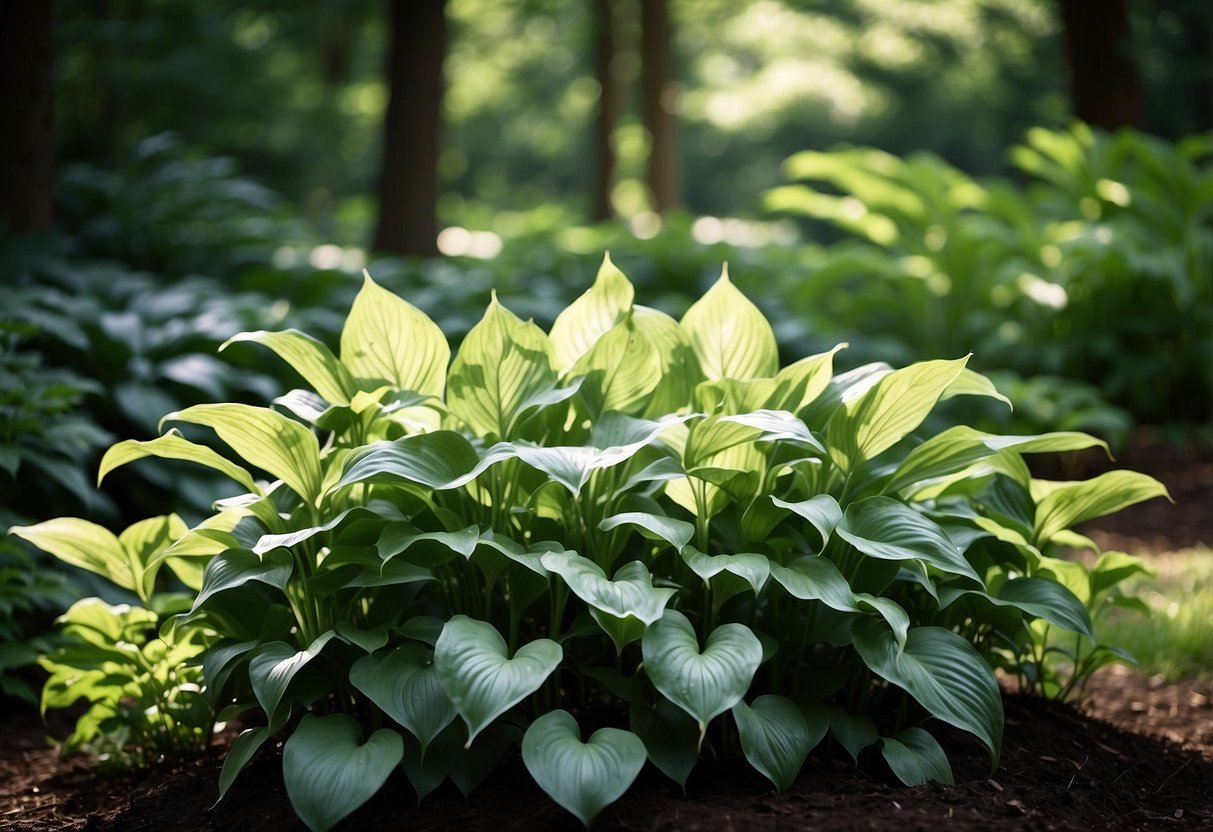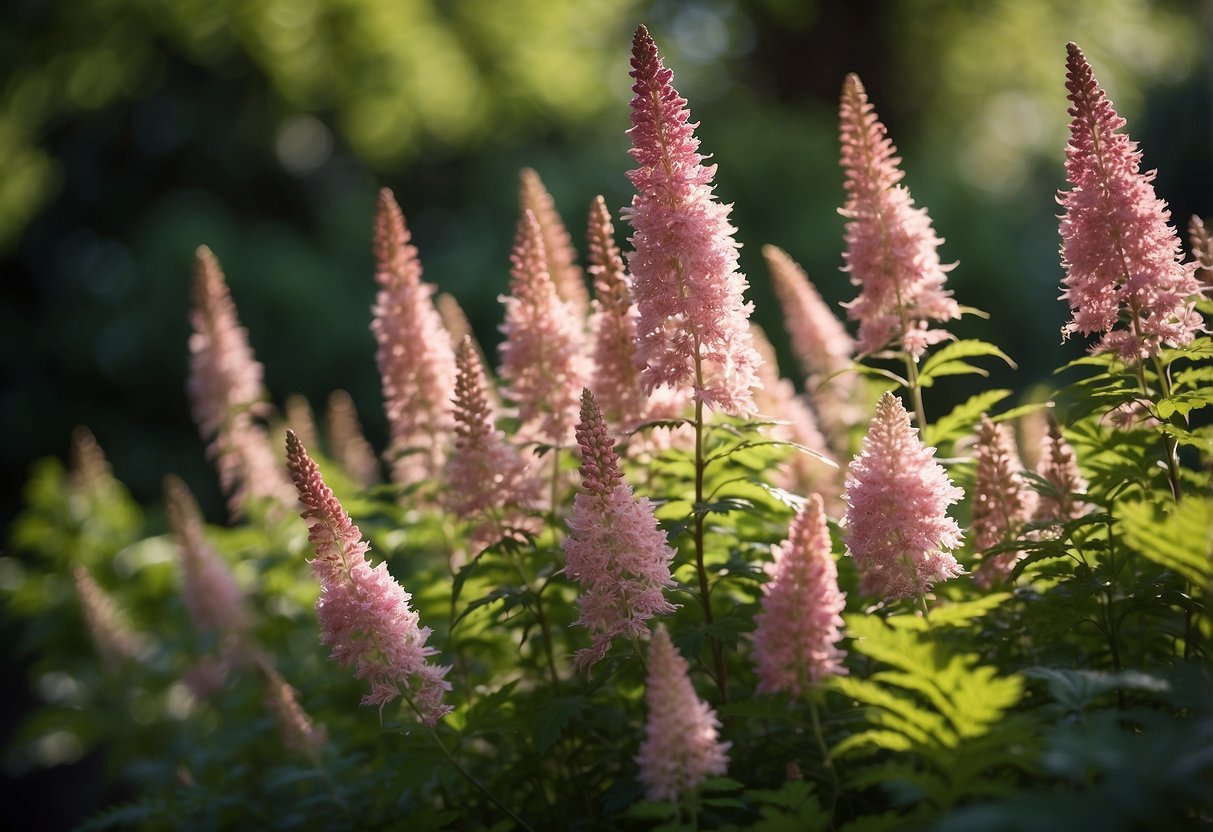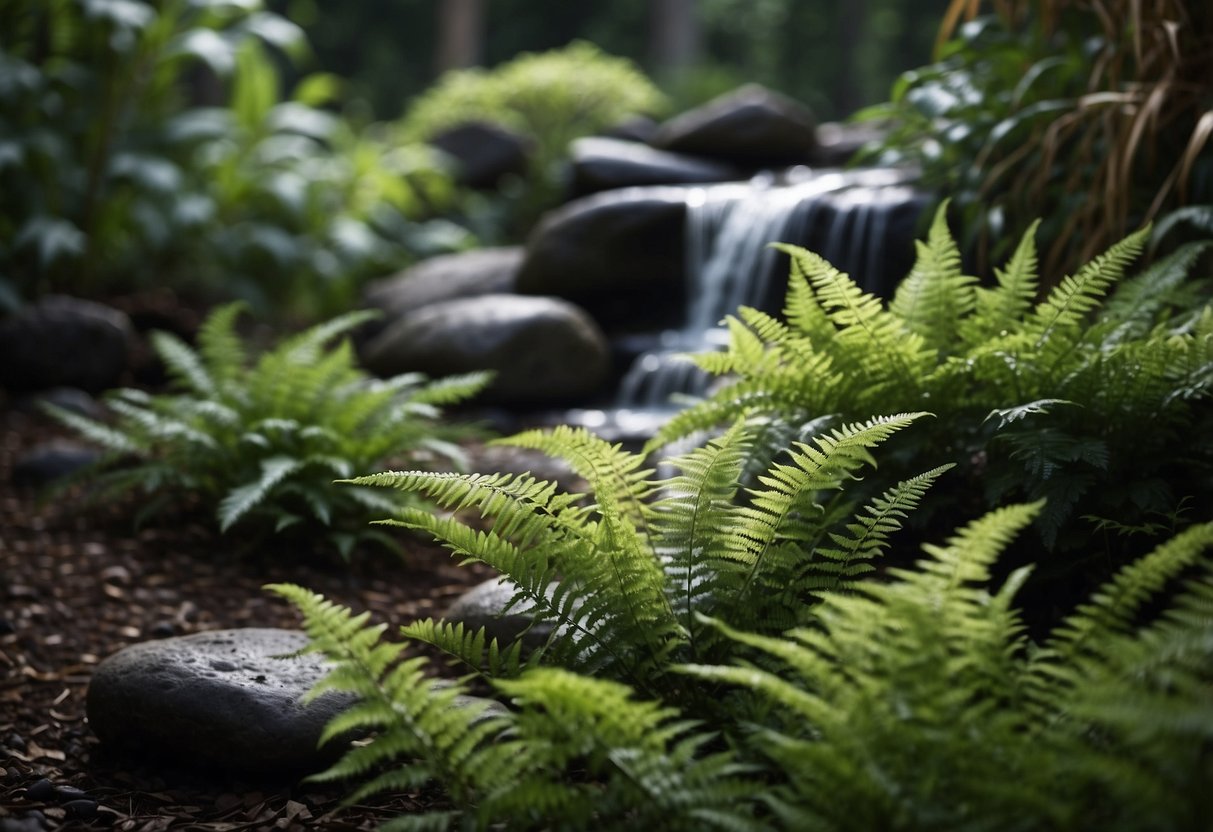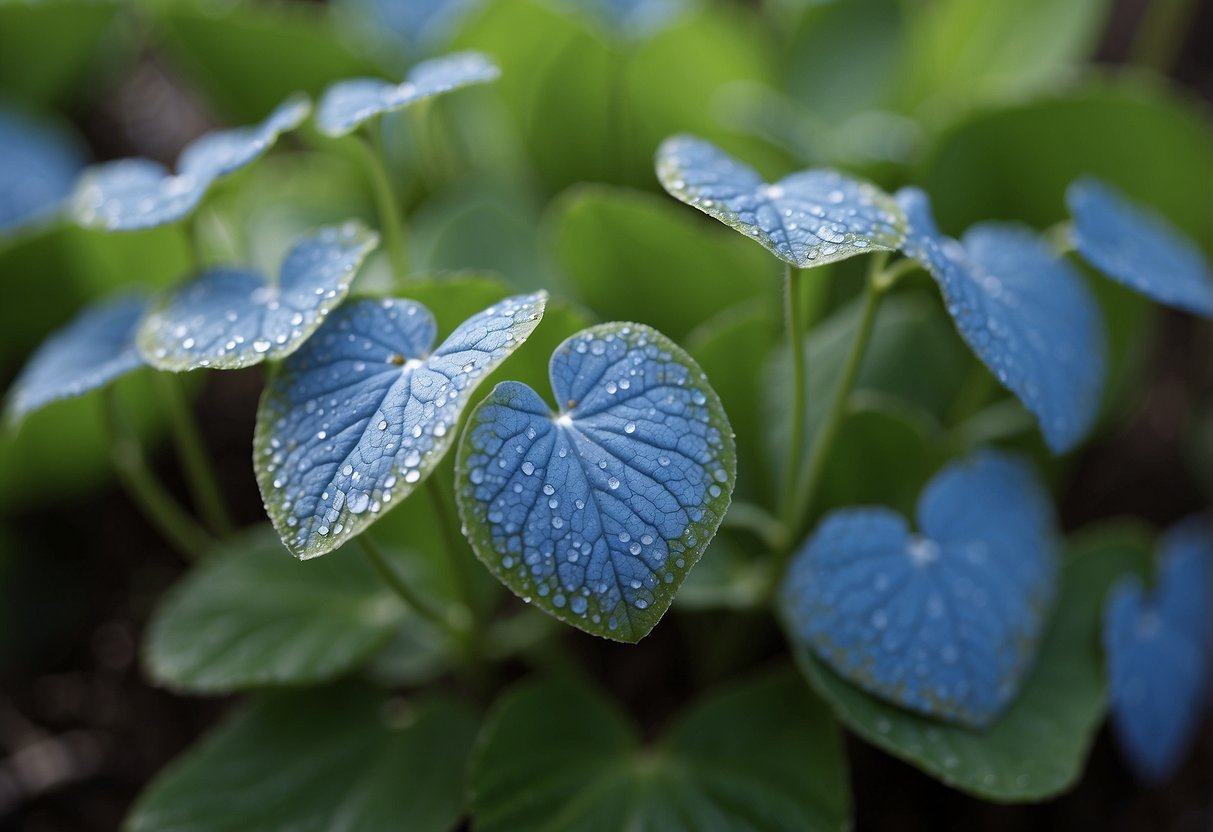Garden Ideas for Dry Shady Areas: Creative Solutions for Lush Spaces
Finding the right plants for dry, shady areas in your garden can be a bit of a challenge. Many plants struggle to grow in these conditions, but don’t worry—there are plenty of options that can thrive here. Adding the right plants to these tricky spots can transform them into lush, beautiful areas of your garden.

When you know what to look for, gardening in dry shade becomes much more manageable. The plants you choose can add color and texture to your landscape. This guide will help you discover some great garden ideas that are perfect for dry, shady areas.
1) Hostas

Hostas are a great choice for dry, shady areas. They come in various colors like blue, green, and gold. Their large leaves add texture and interest to your garden.
You can plant Hostas in containers to brighten up patios and decks. Choose a shady spot for the best results. For more creative ideas, check out these Hosta garden ideas.
2) Astilbe

Astilbe is a fantastic choice for dry, shady areas in your garden. These plants thrive in low-light conditions and bring elegant, feathery blooms in shades of pink, red, white, and lavender.
To keep your astilbe happy, water it regularly, especially during dry spells. Adding mulch around the base can help retain soil moisture and suppress weeds.
Astilbe can be divided in spring or fall, making them easy to maintain and propagate. The vibrant blooms will light up even the shadiest parts of your garden, creating a stunning display. Learn more about growing astilbe here.
3) Japanese Forest Grass

Japanese Forest Grass, also known as Hakonechloa macra, adds a touch of elegance to dry, shady areas. Its arching leaves come in shades of green, gold, or variegated patterns, making it visually appealing.
This grass thrives in well-drained soil. You should plant clumps 18 to 24 inches apart for the best coverage. It’s a great choice for woodland gardens or areas beneath trees. For more details, check out this guide on growing Japanese Forest Grass.
4) Ferns

Ferns are perfect for dry, shady areas in your garden. They are low-maintenance and come in many varieties. One great choice is the Soft Shield Fern which does well in dry soil.
The Cinnamon Fern is another option that adds a pop of color with its reddish-brown fronds. It can grow up to 5 feet tall.
For a delicate look, try the Lady Fern. Its lacy foliage thrives in moist, shaded spots.
5) Lungwort (Pulmonaria)

Lungwort, also called Pulmonaria, is perfect for dry, shady areas in your garden. This plant is known for its unique, lung-shaped leaves and pretty blooms. The flowers appear in early spring, providing vibrant color next to daffodils and tulips.
Once the flowers fade, Lungwort’s striking foliage becomes the main attraction. The leaves are often spotted or variegated, adding visual interest.
Lungwort prefers moist, humusy soil but can handle dry conditions once established. Just make sure the soil is well-draining to avoid root rot.
6) Solomon’s Seal

Solomon’s Seal is perfect for dry, shady gardens. It thrives in areas with rich, well-drained soil, making it great for woodland or shade gardens. You can often find it growing under trees.
The plant has arching stems and lance-shaped leaves. Its white, green, or pink tubular flowers add a delicate touch. For more detailed info, check out this guide from Epic Gardening.
Prepare your planting area by loosening the soil about 12 inches deep. Remove weeds and grass. Place the plant in a hole twice the size of its root ball. Happy gardening!
7) Brunnera (Siberian Bugloss)

Brunnera, also known as Siberian Bugloss, thrives in shady areas and can add a pop of color with its sky-blue flowers.
Its leaves are large and often have distinctive silver markings, making it visually striking.
Standing about 12 to 18 inches tall, this perennial is great for ground cover. Keep the soil consistently moist for the best results.
Plant it in areas where other plants may struggle, and enjoy its low-maintenance beauty. For more detailed care, check out this Brunnera care guide.
8) Heuchera (Coral Bells)

Heuchera, also known as Coral Bells, is a versatile perennial that’s perfect for dry, shady areas. These plants have vibrant and colorful leaves that can brighten up any garden.
Heuchera thrives in partial shade and prefers well-draining, humus-rich soil. Darker-leaved varieties can tolerate more sun.
You can plant them in a shade garden or in pots. They are hardy in USDA zones 4-9, making them suitable for many regions.
For more tips on growing Coral Bells, check out this guide on Coral Bells from Proven Winners.
9) Liriope (Lilyturf)

Liriope, also known as lilyturf, is a great option for dry, shady areas.
It’s a hardy perennial that can tolerate drought and partial shade. It also has attractive, grass-like leaves.
There are two main types: Liriope spicata, which spreads, and Liriope muscari, which forms clumps.
Both types can help fill bare spots in your garden. For more on how to grow lilyturf, check out this garden guide.
10) Lamium (Dead Nettle)

Lamium, also known as Dead Nettle, is a great pick for dry, shady areas. Its colorful flowers, which come in shades of pink, purple, and white, can brighten up any garden.
The plant’s variegated foliage is very attractive and can spread up to two or three times its height. It’s ideal for ground cover and helps fill in spaces between other plants.
Lamium is easy to grow. It prefers partial to full shade and well-drained soil. It’s also adaptable to various soil types, making it a versatile choice for different garden settings. Check out this growing guide for more tips.
Understanding Dry Shady Areas

Gardening in dry shady areas can be tricky. It’s important to first identify these conditions and then understand the challenges they pose.
Identifying Dry Shade Conditions
Dry shady areas often have both limited sunlight and dry soil. You might notice these spots under large trees, near walls, or in parts of your garden where the sun rarely reaches. The soil in these areas tends to be dry because the shade reduces moisture from rainfall and irrigation.
Check for signs such as sparse grass, hard soil, and dry leaves. Large trees with dense canopies can block out sunlight and absorb moisture, making it difficult for other plants to thrive. Areas near buildings or fences can also cast long shadows and prevent adequate moisture.
Challenges of Gardening in Dry Shade
Gardening in dry shade areas is tough due to the lack of sunlight and moisture. Plants need light for photosynthesis and water to absorb nutrients. The absence of these essentials means that plants struggle to grow and maintain health.
Additionally, the roots of large trees can compete with garden plants for water and nutrients. This intense competition makes it harder for other plants to survive. Also, many plants that tolerate shade may not do well with dry conditions, while drought-tolerant plants often need more sunlight.
Using drought-tolerant plants that are also shade-loving can help, along with soil amendments and mulching to retain moisture. Be mindful of the specific needs of plants to ensure a thriving garden.
Designing Your Dry Shade Garden

Creating a garden in a dry, shady area can be challenging but rewarding. You need to carefully choose the plants and properly prepare the soil to ensure a thriving garden in these conditions.
Choosing the Right Plants
Selecting the right plants is crucial for a dry shade garden. You’ll want plants that can tolerate low light and dry conditions. For example, hostas and vinca are ideal because they thrive in these environments. Solomon’s Seal and elephant ears can also do well, bringing unique textures and visual interest to your garden.
Consider including sweet potato vine for its deep purple foliage that adds a splash of color. Make sure to choose plants that complement each other in terms of height, texture, and color. This creates a balanced and visually appealing garden design. Refer to this list of tough perennials for dry shade to get more ideas for your garden.
Soil Preparation and Enrichment
Proper soil preparation is key to a healthy garden. Begin by removing any debris or weeds from the area. Incorporate plenty of organic matter, like compost or well-rotted manure, to improve soil structure and moisture retention. Mulch is very effective in a dry shade garden, as it helps retain moisture and control soil temperature.
You might also want to use a drip irrigation system to provide consistent watering without wasting water. Open up the garden to sunlight as much as possible by pruning overhanging branches. This will help the plants get the light they need while keeping the soil moist. Check out this guide for more tips on soil preparation and maintenance in dry, shaded areas.







